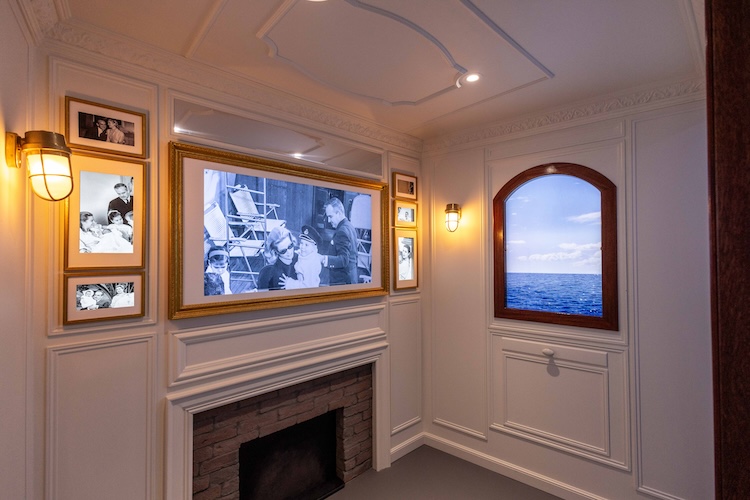A new addition to a permanent exhibition at the Oceanographic Museum honours the late Prince Rainier III’s 100th birthday and showcases the Grimaldis’ longstanding engagement for ocean health
For the Principality of Monaco, the Mediterranean Sea, and by extension the world’s oceans, have been an unnegotiable part of its existence for hundreds of years as a trade corridor, a source of food and sustenance, and an ally in defending the vulnerable rock it is perched on. Prince Albert I (1848-1922) was Monaco’s first sovereign to take an active interest in the Big Blue as an ocean explorer and scientist, and also founded the Oceanographic Museum in 1906. His grandson Prince Rainier III (1923-2005) was the first one to raise awareness among fellow heads of states for the crucial role of the oceans in the world’s eco system, and Rainier’s son Prince Albert II (b. 1958) has in turn amplified the message and extended the call for protective action from the ocean to the environment in general.
But while Prince Albert I and his great-grandson Prince Albert II have received substantial attention and support for their work, Prince Rainier’s engagement fell in a time when people were preoccupied with reconstructing the post-WW II world and economy. The reformer prince, as he is often called, would have turned 100 years old in 2023 – reason to honour his tireless work as an advocate of ocean health through a new permanent exhibition at the Musée Océanographique in Monaco, titled “The Prince and the Mediterranean”.
The newly highlighted chapter in the Grimaldi family history is located in the museum’s “Monaco and the Ocean” section, which already features extended segments dedicated to Prince Albert I’s scientific work and Prince Albert II’s global work in ocean protection. In a virtual visit on board the Grimaldi family yacht Deo Juvante II, visitors can peek over the shoulder of Prince Rainier III as he works on his projects. Guided by the voice of H.S.H. Princess Stéphanie, they explore four intimate spaces, successively evoking the different facets of the visionary ruler:
Area 1, “The Man“, introduces us to the caring family man with a passion for the sea, following in the footsteps of his Grandfather, Prince Albert I.
Area 2, “Emotion“, shows us how his love of the underwater world and the Mediterranean is the prince’s source of his commitment.
Area 3, “Action“, reminds us of the committed politician who initiated numerous actions to protect the ocean, which are still relevant today.
Area 4, “Passing on“, leads us to the generational transfer of commitments and responsibilities into the hands of his son, Prince Albert II whose own remarkable work is showcased on the upper floor of this exhibition.
Presented through reconstructions of the different areas of the Deo Juvante II, these areas recreate four distinctly different universes by combining a variety of objects, audiovisual documents, and period photographs, as well as digital devices (projection, video-mapping, etc.) in an immersive scenography.
The reign of Prince Rainier III is marked by three milestone events for the protection of the Mediterranean:
1976: Ratification of the RAMOGE agreement between Monaco, France, and Italy to protect the coastal waters from Saint Raphaël to Genoa, including Monaco. It has now been extended from Marseille to La Spezia.
1996: Ratification of ACCOBAMS (Agreement on the Conservation of Cetaceans of the Black Sea, Mediterranean Sea and Contiguous Atlantic Area), the secretariat of which is in Monaco.
1999: The Pelagos Agreement, initiated by Monaco, France and Italy, creates a sanctuary of 87,500 km² to protect marine mammals.
“Man undoubtedly came from the sea. In the face of its immensity, hatred and ambitions shrink and fade to meet the demands and needs of a modern world ever more eager for knowledge. I am convinced that many problems find their solution in the in-depth study and in-depth knowledge of the sea and its depths. Perhaps it is even there, in the silence of those great unknown depths, that the source of true and fruitful peace can be found.”
— Opening speech by Prince Rainier III at the XXth CIESM Congress (1966)
What else is going on at the Oceanographic Museum?
Apart from this new permanent exhibition, numerous events, displays, and animations await visitors of all ages. Those ready to embark on polar adventures can put themselves in the shoes of a reporter and discover the North and South Poles through five themed areas, including the world-famous “Immersion” room and its interactive projections. Mission Polaire lets you experience the Arctic and Antarctic as if you were there! Since its 2022 inauguration, this exhibition has drawn over one million visitors so far.
The journey continues with Greg Lecoeur’s emblematic photo exhibition “Fragile Worlds”. The colourful world of aquariums and sea creatures is also always worth a visit. Many activities are interactive and hands-on, and well suited for families with younger children. For the holiday season the museum also offers games such as the Escape Game or the Immerseave 360 experience which lets you dive to the depths of the oceans with the help of VR masks.
For more news, details, opening hours, and admission fees consult the museum’s website.
All photos © Institut océanographique de Monaco – Cedou or as otherwise credited
Photo of Prince Albert I by Léon Bonnat, Prince’s Palace of Monaco; Public domain, via Wikimedia Commons
Photo of Prince Rainier III by Robert LeRoy Knudsen, Public domain, via Wikimedia Commons
Photo of HSH Prince Albert II by 首相官邸ホームページ, licensed under CC BY 4.0; via Wikimedia Commons








Leave a Reply